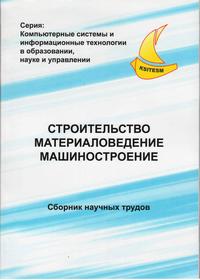Electrochemical processes modeling and sensing upon dirac potentiostatic excitation
Keywords:
tical model, computer simulation, pulse excitation, electrochemical sensingAbstract
Modeling of the processes at the electrolyte–electrode interface by the application of electrical excitations is of great importance in electrochemistry. Straightforward and simple estimation of the parameters of double layer and charge transfer processes allows optimization, while increasing demand for the analysis of complex processes requires improvement of existing methods and establishment of new ones. Based on previous studies of electrochemical behavior of copper sulfide minerals, an electric analog is introduced and also a mathematical model is derived for potentiostaticexcitation of these systems by a Dirac pulse. The obtained analytical results are compared to experimental data and to the dataobtained by computer simulation. A computer system for pulse generation and the monitoring of the response is developed in the LabVIEW programming environment, and applied to real systems. High matching level between the model and the results is achieved by the proper choice of model parameters, which confirmed the proposed model and enabled possible further research within the fast and simple experiments with low number of experimental runs.
References
Tantavichet N, PritzkerM.D.Low- and High-Frequency Pulse Current and Pulse Reverse Plating of Copper. J. Electrochem, 2003, soc.150, p. 665.
HatzellK.B., Sharma A., FathyH.K.A survey of long-term health modeling, estimation, and control of Lithium-ion batteries.Proceedings of the American Control Conference (ACC).Challenges and opportunities. 2012, pp. 584-591.
Stevic Z., Rajcic-Vujasinovic M. Chalcocite as a potential material for supercapacitors.J. Power Sources, 2006, 160, 1511.
Stevic Z., Rajcic-Vujasinovic M., Dekanski A. Estimation of Parameters Obtained by Electrochemical Impedance Spectroscopy on Systems Containing High Capacities. Sensors, 2009, 9, 7365.
Stevic Z., Rajcic-Vujasinovic M., Radovanovic I.Comparative Analysis of Dynamic Electrochemical Test Methods of Supercapacitors. Int. J. Electrochem, 2014, Sci.9, 7110.
Conway B.E.Electrochemical supercapacitors.New York, Kluwer Academic/Plenum Publishers, 1999.
Gorman D. J.On use of the Dirac delta function in the vibration analysis of elastic structures.Int. J. of Solids and Structures, 2008, 4605.
ConwayB.E., PellW.G., LiuT.C. Diagnostic analyses for mechanisms of self-discharge of electrochemical capacitors and batteries. J. Power Sources, 1997, 65, p. 53.
Stevic Z., Rajcic-Vujasinovic M., Bugarinovic S., Dekanski A. Construction and Characterisation of Double Layer Capacitors. ActaPhysicaPolonica, 2010, A117, 228.
ZhengJ.P., Huang J., JowT.R. The limitations of energy density for electrochemical capacitors J. Electrochem, 1997, Soc. 144, 2026.
National Instruments LabVIEW.Analysis concepts; NI Corporation, 2010.
Stevic Z., Andjelkovic Z., AnticD.A. New PC and LabVIEW package based system for electrochemical investigations. Sensors, 2008, 8, 1819.
Downloads
Issue
Section
License
Редакція Видання категорично засуджує прояви плагіату в статтях та вживає всіх можливих заходів для його недопущення. Плагіат розглядається як форма порушення авторських прав і наукової етики.
При виявлені у статті більш ніж 25% запозиченого тексту без відповідних посилань та використання лапок, стаття кваліфікується як така, що містить плагіат. У цьому випадку стаття більше не розглядається редакцією, а автор отримує перше попередження.
Автори, в статтях яких повторно виявлено плагіат, не зможуть публікуватися в усіх журналах Видавництва ДВНЗ «Придніпровська державна академія будівництва та архітектури».
Автори, які публікуються у цьому журналі, погоджуються з наступними умовами:
- Автори залишають за собою право на авторство своєї роботи та передають журналу право першої публікації цієї роботи на умовах ліцензії Creative Commons Attribution License, котра дозволяє іншим особам вільно розповсюджувати опубліковану роботу з обов'язковим посиланням на авторів оригінальної роботи та першу публікацію роботи у цьому журналі.
- Автори мають право укладати самостійні додаткові угоди щодо неексклюзивного розповсюдження роботи у тому вигляді, в якому вона була опублікована цим журналом (наприклад, розміщувати роботу в електронному сховищі установи або публікувати у складі монографії), за умови збереження посилання на першу публікацію роботи у цьому журналі.
- Політика журналу дозволяє і заохочує розміщення авторами в мережі Інтернет (наприклад, у сховищах установ або на особистих веб-сайтах) рукопису роботи, як до подання цього рукопису до редакції, так і під час його редакційного опрацювання, оскільки це сприяє виникненню продуктивної наукової дискусії та позитивно позначається на оперативності та динаміці цитування опублікованої роботи (див. The Effect of Open Access).

